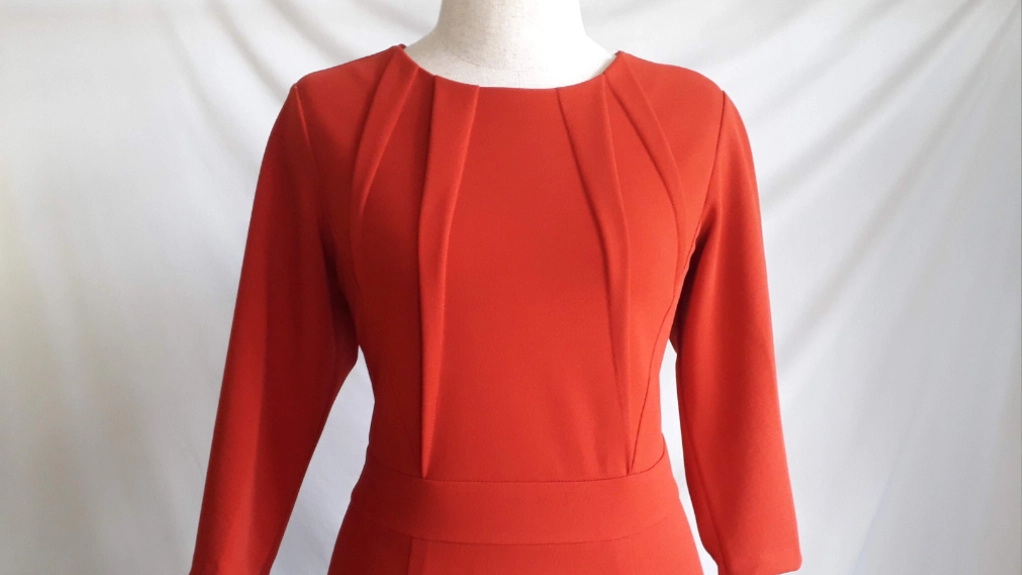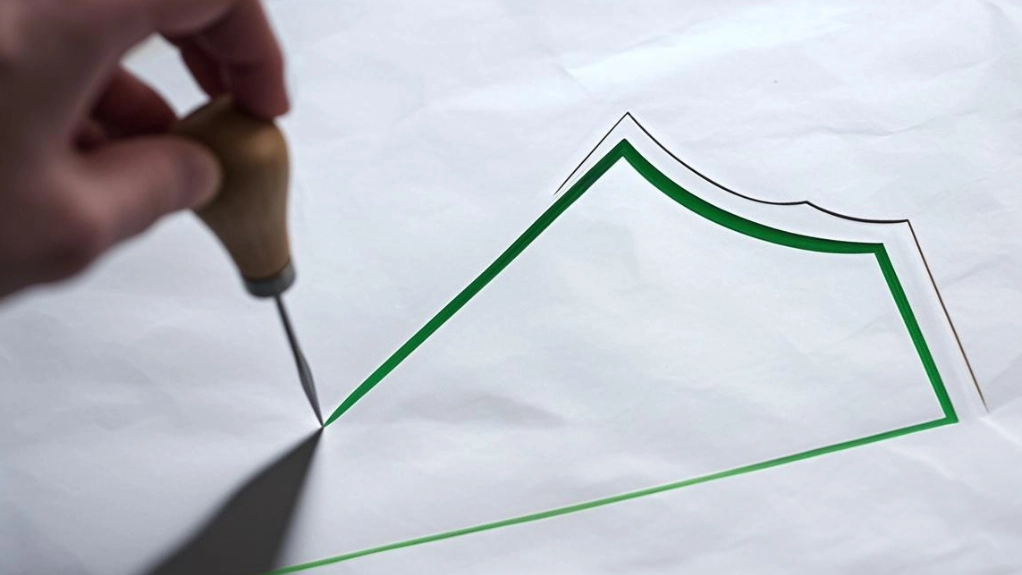Dart manipulation is essential when transforming flat fabric into beautifully fitted garments. As a basic technique in patternmaking, it helps control fullness and create three-dimensional shapes that fit the body's natural curves.
Basic darts may seem simple. But mastering them allows for many design options, like princess seams and creative pleating. Let's explore how this vital skill can elevate your garment construction from basic to professional-grade results.
Key Takeaways
- Dart manipulation transforms flat fabric into three-dimensional shapes. It strategically reposition or modify darts to achieve better garment fit.
- The Pivot Method lets sewists move darts while keeping the pattern intact by rotating around a fixed point.
- The Slash-and-Spread Method lets designers adjust pattern fit by cutting and spreading sections, altering fullness or silhouette while maintaining the design.
- Darts can be split, converted to pleats, or integrated into seams to distribute volume and create smoother silhouettes.
Importance of Dart Manipulation in Sewing
When creating well-fitted garments, dart manipulation serves as a fundamental technique. It transforms flat fabric into three-dimensional shapes that conform to the body's natural curves.
Mastering dart manipulation basics is essential for achieving a tailored fit. It's particularly effective when working with pattern drafting and garment construction. You can accommodate different body types and design preferences by strategically placing bust darts and other shaping elements.
This skill enables you to modify basic patterns into custom-fitted pieces. This will enhance the wearer's form while maintaining comfort and style.
7 Common Types of Darts in Sewing
Understanding the primary darts becomes essential for achieving professional-looking garments:
- Standard Dart: The most basic type, typically used in the bust, waist, or hip areas. It consists of a triangular fold that tapers to a point.
- French Dart: This dart starts at the bust and angles down toward the waist. It creates a more flattering shape.
- Cut-on Dart: Also known as a "seam dart," this type is created by cutting the fabric along the dart line and sewing it together. This method is used to eliminate the need for a separate dart.
- Double Dart: This dart consists of two folds that meet at a single point. It provides more shaping than a standard dart.
- Shoulder Dart: This dart is found in garments with structured shoulders. It shapes the shoulder area and improves fit and comfort.
- Back Dart: Used in the back of garments, this dart helps contour the fabric to the body's shape.
- Fish Eye Dart: This unique dart is wider at the top and tapers at the bottom. It's often used in complex designs for added shaping.
2 Methods of Manipulating Darts

Next, let's discuss two methods that can help you manipulate the darts.
Pivot Method
The Pivot Method stands as a fundamental technique. It can reposition darts while maintaining pattern integrity.
To use this pattern-making technique, follow this step-by-step guide:
- Draw a line from your desired dart position to the apex, which acts as your pivot point.
- Anchor your pattern at this point, then rotate until the left dart leg aligns with your new position.
- When moving a dart with this method, trace the updated lines and blend the shoulder seam.
- Remember to add notches and true the dart for accuracy.
This basic method lets you experiment with placement without cutting the pattern piece.
Slash-and-Spread Method
The Slash-and-Spread Method is a key technique in pattern making. It allows for the adjustment of pattern shapes while preserving the design.
To apply this method, follow these steps:
- Identify the area you want to alter and make slashes into the pattern. Stop the slashes just before the seam allowance.
- Spread the slashes apart to create the desired fullness or shape. Make certain the pattern maintains its proportions.
- Redraw the lines to smooth out any irregularities and preserve the silhouette.
- Don't forget to add any necessary notches and seam allowances to ensure accuracy.
This simple approach lets you modify patterns without losing the original design intent.
Applications of Dart Manipulation

With the fundamentals in place, it's time to look at the specific applications of dart manipulation.
Moving Darts
Adjusting the position of darts allows for improved fit and silhouette.
- Determine the best location for your darts based on the body's contours and the desired shape.
- When relocating darts, make sure the fullness is distributed evenly. This will keep balance and prevent distortion.
- It's important to keep dart points close to key areas like the bust or waist for effective shaping.
This method improves fit. It can also change the design by integrating darts into style features like curves or lines.
Splitting Darts
Splitting one dart into several smaller ones gives you better control over garment shaping.
- To use this technique, measure your original dart's width and evenly distribute the fullness across the new positions.
- Keep all dart points within 1-2 inches of the bust apex for optimal shaping.
Splitting darts turn excess volume into decorative elements like tucks or pleats. Test your dart placements during muslin fittings. This will ensure that they enhance the garment's silhouette.
This method is effective for curvy figures. Multiple smaller darts create smoother, more precise shaping.
Converting Darts
Dart conversion provides flexible ways to change fitting elements. It transforms them into different design features while maintaining proper garment shaping.
- Merge two darts into one larger new dart and position it within 2 cm of the bust point.
- Through fullness redistribution, you can convert darts into gathers by slashing and opening them.
- For designs requiring minimal contouring, consider eliminating darts completely.
- Draw multiple lines toward the shoulder and fold them flat. So, you can transform darts into decorative tucks or pleats.
Common Challenges and Solutions
Mastering dart manipulation techniques can be rewarding. But several common challenges often arise while manipulating the dart.
You may face fit inconsistencies when finding the best dart placement, especially near the bust apex. Understanding how bust and waist darts interact can be challenging. Because improper rotation can impact the garment's drape.
To overcome these challenges, rely on detailed tutorials. Consider using fitting guides specifically designed for your body type.
Plus, don't hesitate to experiment with different dart positions during the muslin stage. Connect with experienced sewists for troubleshooting support.
Conclusion
Dart manipulation is an essential skill for achieving professional garment construction. You can create precise shaping by mastering techniques like the Pivot Method and the Slash-and-Spread Method.
Keep accurate measurements, mark your pivot points clearly, and test your manipulations on muslin first. When done correctly, these techniques will turn your flat pattern work into perfectly fitted garments. 🙂
Learn more sewing tips on the Longan Craft Blog, and dive into the fabric world with Longan Craft!
FAQs
What Is a Dart Manipulation?
You'll adjust a dart's position, shape, and orientation on your pattern for a better fit and style. This process lets you control garment volume while keeping the original measurements and fit requirements.
What Does a Dart Do in Sewing?
A dart creates a three-dimensional shaping in your garment by folding and stitching a triangular section of fabric. You'll use it to control fullness and mold flat fabric around your body's natural curves.
What Are the Benefits of Dart Manipulation?
You'll achieve better garment fit, more design versatility, and improved style options. You can create various silhouettes, accommodate body variations, and produce professional-looking results while maintaining structural integrity in your pieces.
How Many Types of Dart Manipulation of the Front Bodice Are There?
There are four main types: dart rotation, dart transfer, dart elimination, and creating new darts or gathers. Each technique provides unique ways to adjust fullness and achieve your desired fit.


0 comments